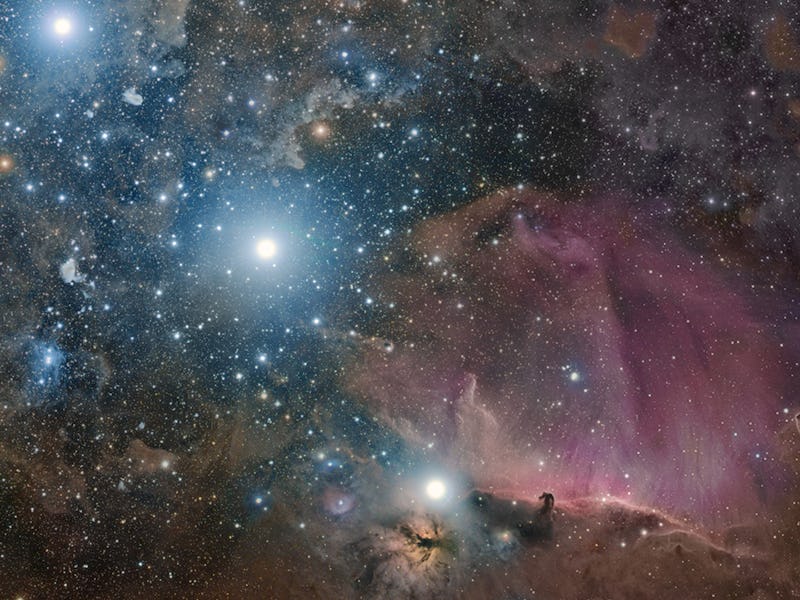Orion’s Belt is a magnificent stretch of cosmic wonders. From the Horsehead Nebula to the Flame Nebula, to the three famous stars that make up the belt, there is a playground of scientific research to be had in this region of our Milky Way.
Astrophotographer Rogelio Bernal Andreo took this beautiful photo of the Belt in 2013 by using his telescope and a dual imaging system that captures photos in visible and near-infrared light. The result is a stunning look at the complexity of the belt.
Orion's Belt consists of three iconic stars and a whole lot more.
In the lower right corner is a glimpse at the Horsehead Nebula, which seems dwarfed by the Belt. But, it is actually five light-years tall. Its thick clouds of dust and gas make it an ideal place for forming new stars, which are challenging to see because the nebula is so dark. The Horsehead doesn’t give off light, but it is illuminated by another nebula close behind it called IC 434.
To the left of the Horsehead is the Flame Nebula. This emission nebula pushes out dense clouds of ionized hydrogen gas, emitting a brilliant light. Like the Horsehead, the Flame is also home to several hundred young stars.
Sweeping across the photograph are the three main stars of Orion’s Belt: Alnitak, Alnilam and Mintaka. Alnitak is 250,000 times brighter than the sun and is actually a binary system, meaning two stars — in this case a blue supergiant and blue dwarf — are very close to each other. Alnilam is the brightest of the belt at 375,000 times the luminosity of the sun. Alnilam is a blue supergiant and is the 29th brightest star in the sky. Then there’s Mintaka, which still comes in at 90,000 times brighter than the sun. It is also a binary system, but neither are supergiants.
Orion’s Belt is an important area of study because of the many young stars forming within the larger constellation. Scientists speculate that there may be a wealth of planets lurking in the shadows of these stars, some of which may even be habitable. But, it won’t be until the James Webb Space Telescope goes online in 2018 that NASA will have a chance to peer beyond the brightness of the stars and find our alien neighbors.
